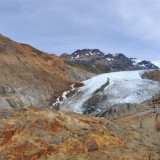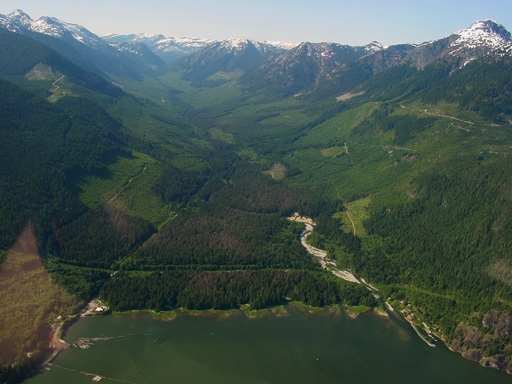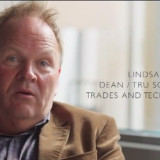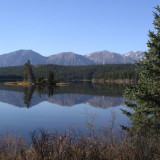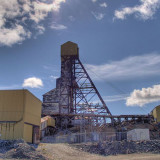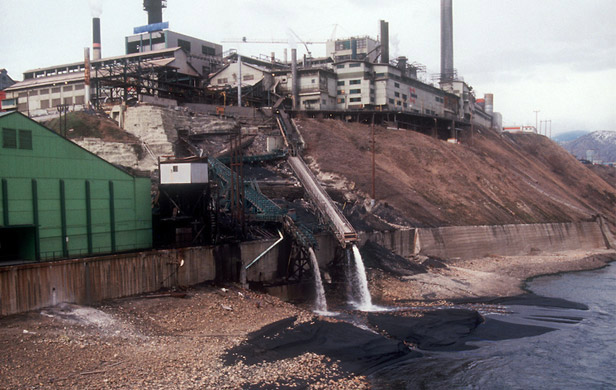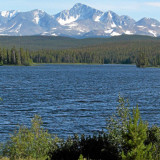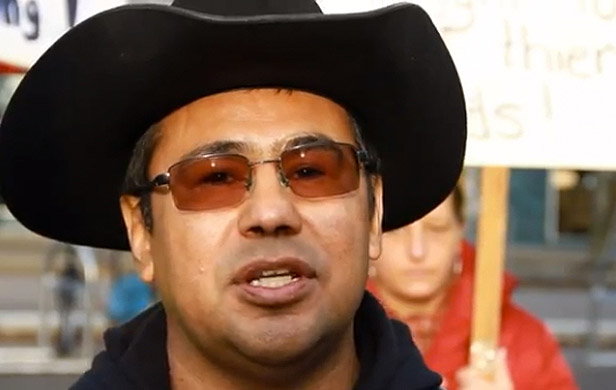
The $5.3 billion proposed Kerr-Sulphurets-Mitchell (KSM) mine, which received BC government approval yesterday, boasts one of the world’s largest gold and copper deposits. But with big promises of jobs and ore come serious concerns over the staggering volumes of tailings and acid rock drainage the three-pronged mine could produce.
Its 2 billion tonnes of tailings, for instance, represent 6-7 times the volume slated to be produced by nearby Red Chris Mine.
Located in the northwest corner of the province, the project is made up of three neighbouring mountains from which proponent Seabridge Gold estimates it could mine 10 billion pounds of copper, 133 million ounces of silver, 38 million ounces of gold and 200 million pounds of molybdenum. Seabridge is trumpeting 1,800 jobs during construction and 1,000 permanent jobs once the mine is up and running.
Province touts “family-supporting jobs”
Employment opportunities seem to have been the key driver of the BC government’s approval. “This will be a major employer, not just for the northwest but for all of B.C. and it will pump a lot of money into our economy,” BC Minister of Mines Bill Bennett told the Canadian Press upon announcing the mine’s environmental certificate yesterday. “These are high-paying jobs. They’re family-supporting jobs.”

Seabridge is also touting broad First Nations support. It has signed an agreement with the Nisga’a Nation, which includes profit sharing and skills training. The company also claims support from the Gitxsan First Nation.
Alaska faces potential impacts of KSM Mine
The project is also stoking serious concerns about impacts on rivers and fish, particularly in Alaska, which would be forced to deal with much of the mine’s waste issues. This from Mary Catherine Martin in the Juneau Empire, which produced an in-depth series on the mine back in April:
[quote]
It would also produce more than 2 billion tons of tailings, and one of its three open pit mines would be about as deep as the deepest open pit mine in the world today. Water treatment facilities filtering water from the mine site and into the Unuk River, which flows into Alaska’s Misty Fjords National Monument, may need to operate 200 years or more to prevent acid from draining into Southeast Alaska waters.
British Columbia’s Environmental Assessment Office, which is reviewing Seabridge Gold’s 33,000-page mining application, says review and oversight — as well as Seabridge’s efforts to date — will ensure the mine, if permitted, is environmentally safe.
But others in Alaska and BC worry about the mine’s vast scope and effect on fish. They say should anything go wrong with this or other mines proposed in BC during or after their operation, acid mine drainage could contaminate important salmon producing rivers and Southeast Alaska’s waters, and Southeast Alaska and Yakutat’s more than 5,000 annual fishing jobs — and its fish — could be in jeopardy.
[/quote]
Despite these well-founded concerns in Alaska, its state regulator has lacked the resources to conduct a thorough review of its own, relying on funding from Seabridge to engage with the application, and putting a great deal of trust in the BC Environmental Assessment Office. “The state’s participation in the permitting review (for KSM) seems entirely dependent on funds from Seabridge Gold,” Chris Zimmer of Rivers Without Borders told the Juneau Empire. “I think this is an inherently bad situation.” His organization has been asking the federal State Department to get involved in the process, in order to ensure local authorities don’t give the matter short shrift.
To claims that Alaska has little regulatory power to intervene in the process, Zimmer retorts:
[quote]The state can be proactive and demand better standards, higher bonds, other mechanisms to protect water quality…invoke the Boundary Waters Treaty (of 1909). Look to the example of Montana and the Flathead Valley.[/quote]
With provincial approval of the project, that ship may have already sailed, but that’s not to say it doesn’t face significant hurdles going forward, on both sides of the border.
BC First Nations concerned about fish impacts
Impacts on fish have been a concern for First Nations in BC as well. The Gitanyow First Nation, which fishes the Nass River, where the tailings facility would be located, has expressed grave reservations about the project. It commissioned UVic biologist Michael Price to study the potential impacts of the project on downstream salmon. In a report submitted to the provincial government by the Gitanyow Fisheries Authority, Price concluded that salmonids “will undoubtedly be subject to sub-lethal metal toxicity. In some circumstances…the effect most probable is secondary death.”
Seabridge claims it has responded to these concerns with the addition of a lined cell to protect watercourses from “potentially acid-generating material”. Says Seabridge Vice President of Environmental Affairs Brent Murphy, “This (lined cell) is one of the main aspects of accommodation and was built into the design to address the concerns of the local Aboriginal people.”
[signoff3]
The company has signed an agreement with the Gitanyow to monitor water quality and fish health, but will that be enough to appease their concerns in the long run? Moreover, the company has yet to reach a deal with the Tahltan First Nation – renowned for blocking other mining and gas projects in the past, particularly over water and salmon issues. Without firm support from the Tahltan and Gitanyow – especially in light of the recent Tsilhqot’in decision – the project will remian on shaky ground.
On that note, The Tsilhqot’in case and failed Prosperity Mine project offer a reminder of how provincial approval can be trumped by legal complications and federal rejection of the project. With the Harper Cabinet yet to render a decision on KSM, any celebration of the project’s approval at this stage is premature. In a letter to the Canadian Minister of the Environment last year, the Gitanyouw Hereditary Chiefs complained, “the timelines imposed by the (BC) EAO are clearly inadequate to enable meaningful consultation and ensure that proper mitigation aspects are in place.” That’s just the sort of language that can form the basis of a constitutional challenge, built on the strengthened foundation of the Tsilhqot’in decision.
That said, all signs are pointing toward a Fall approval from Cabinet, as the Canadian Environmental Assessment Agency has already determined in its own review that the project would likely result in no “significant adverse environmental effects.” At that point, the strongest defence remaining against the project would likely be a First Nations-led legal challenge.
Funding not in place
Even if the company faces no serious legal challenges or regulatory hurdles, the project is not yet a given, without the significant financial backing required to make it a reality.
“Obviously, we have high expectations for this project, but until we get a partner in that’s willing to fund most of the capital and build the mine, the project is not a go yet,” Seabridge CEO Rudi Fronk told the Canadian Press.
[quote]We need that partner in place to make that construction and production decision. We’re not going to make it on our own.[/quote]
